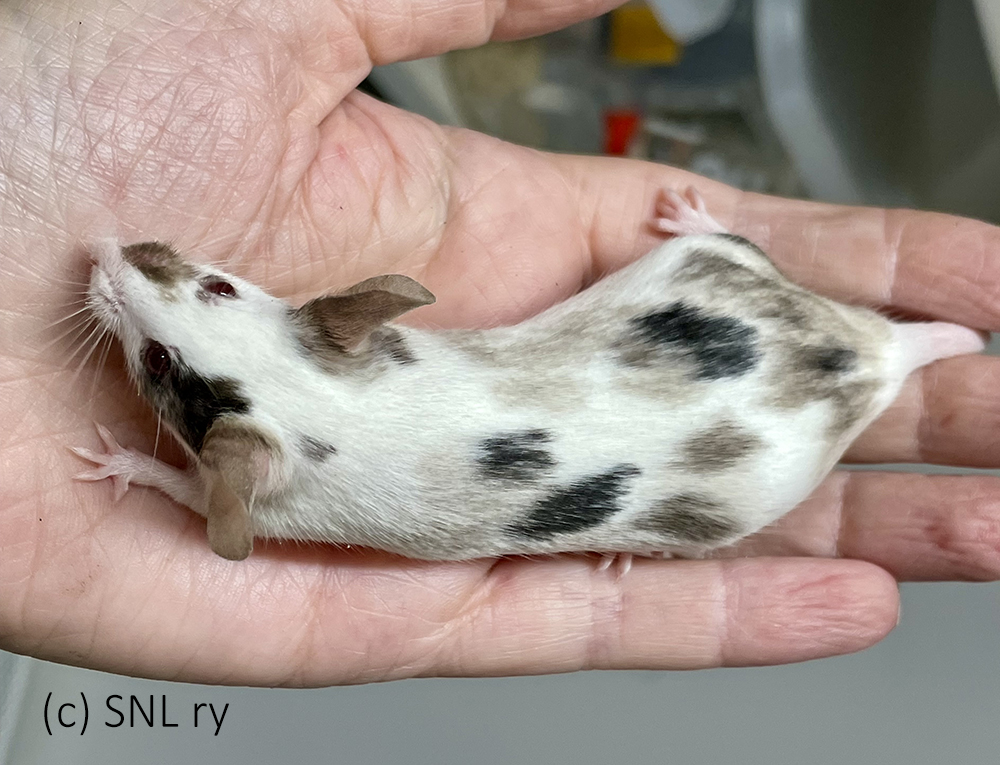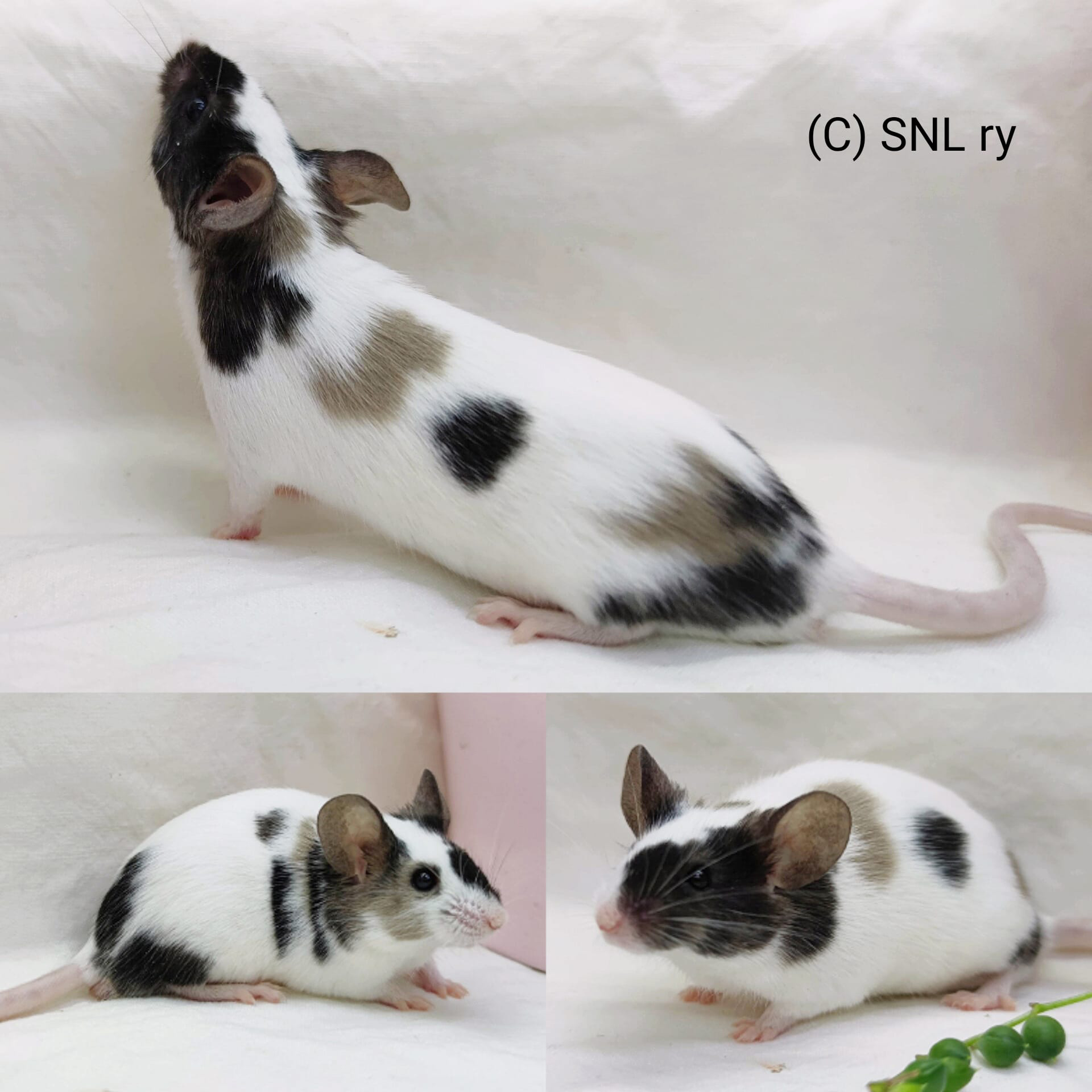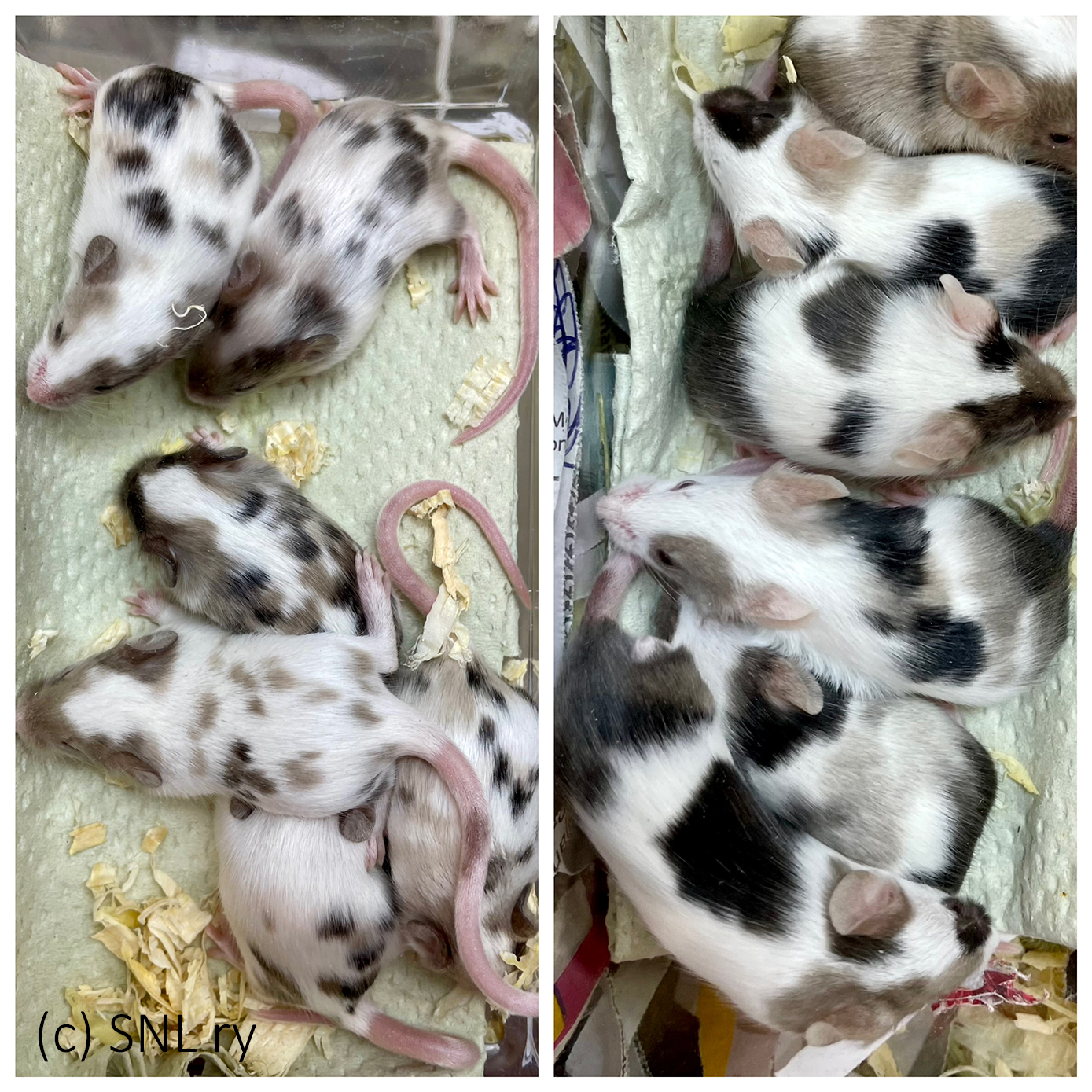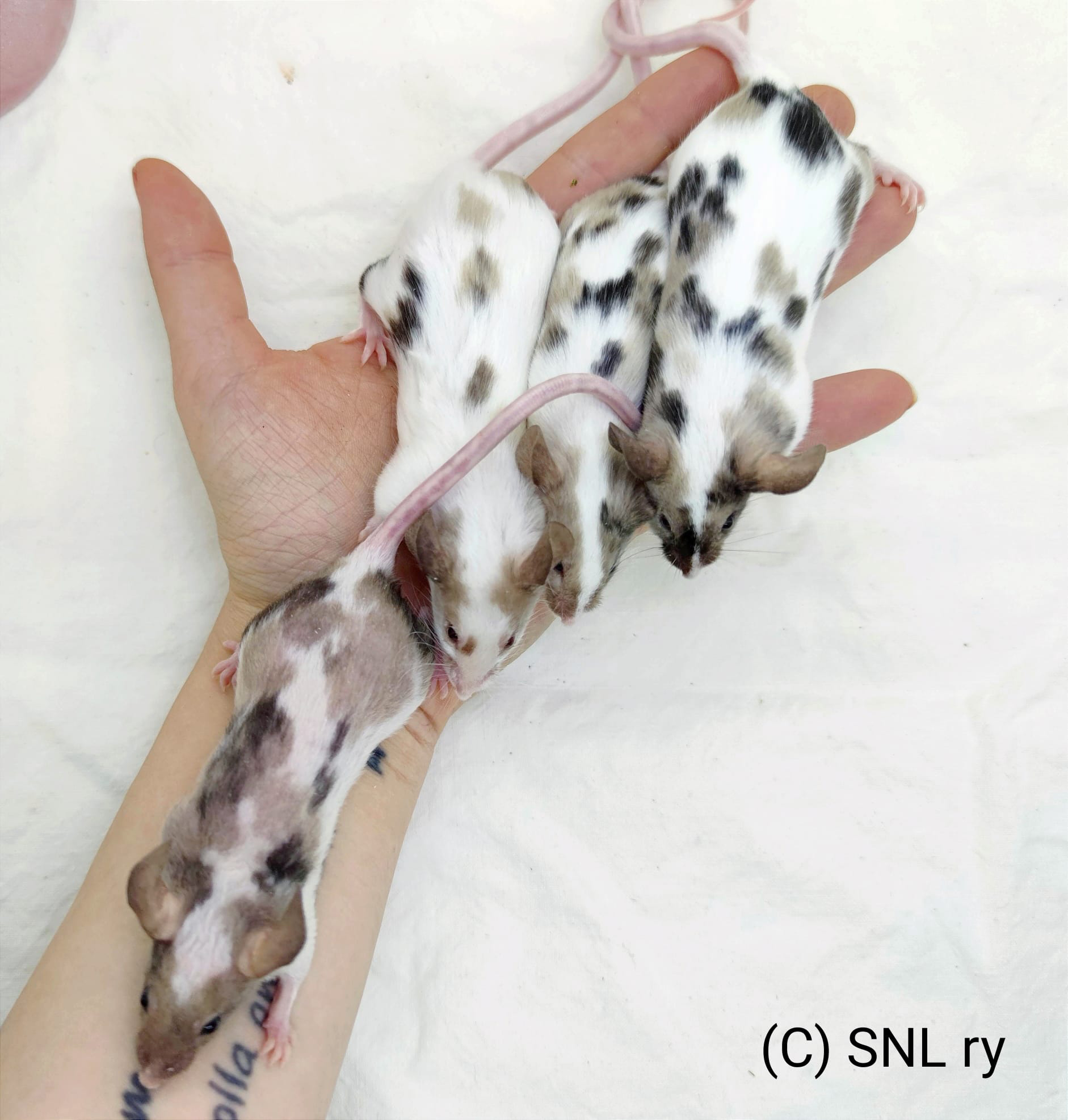Varieties
Undstandardized
Multicolor (mc)
Spl/+ c-recessives (Splashed), or
Va (varitint waddler), or
Ay/at U/* s/s (Sable with recessive white spotting), or
pun s/s (pink-eye unstable + recessive white spotting), or
cm/cm s/s or cm/cch s/s (chinchilla mottled + recessive white spotting), or
pm1/2/p s/s (pink-eye mottled + recessive white spotting)
"A multicolor mouse is to have spots of at least contrasting colours on the back and sides. The spots to be small, as numerous as possible, on a white background. Spots to be clear cut and devoid of brindling. Spots of colour on the undersides and belly to be adjudged an added attraction. Eyes any colour, including odd-eyed."
Breeding information below the pictures.
Quick Look
Multicolor is the "little sister" of tricolor. The basic genetics are the same, but the variety has been bred to have small spots of colour. That is, the main difference is what s/s modifiers one breeds toward. Compared to a tricolor, multicolor mice are clearly a white mouse with spots of two or more colours (see even and broken).
The standard calls for small spots and this compares mainly to the patches on a triclor, calling for spots more like those on a broken or an even (the pattern on a multicolor does not need to resemble neither of those varieties). If the judge is pondering between two equally good multicolors, they can favor the one with smaller spots. Note, however, that the standard says "spots", not anything smaller.
When it comes to "numerous", this doesn't call for a mouse filled with dots. Instead, a multicolor with more spots wins over one with fewer spots. A multicolor with a tad less spots may be awarded if it is otherwise fine example of the variety, espcially when it comes to spots being clear cut and/or having no brindling. The latter fault tends to be very common on both tricolors and multicolors.
For more information, do read up on the article discussing Tricolor.






